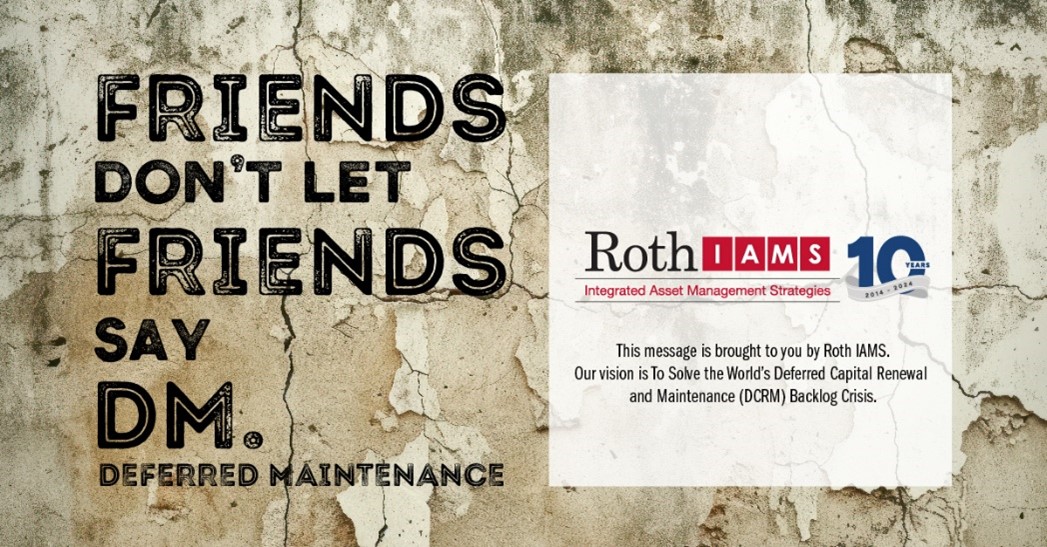In a recent webinar I did called “Ask Bill Anything” I took the opportunity to answer questions from both a live webinar audience as well as from some emailed questions. Over the next few blog posts I’ll share these questions along with my response and thoughts. If you would like to view a recording of the webinar, Click Here.
The first question I was asked was, “Why do you keep saying DCRM instead of DM?”
In the realm of facility and asset management, a subtle yet significant shift in terminology has been gaining traction: from Deferred Maintenance (DM) to Deferred Capital Renewal and Maintenance (DCRM). But why the emphasis on this change? Let’s delve into the rationale behind this linguistic evolution.
For decades, DM has been the standard term used to describe postponed upkeep and repairs within facilities. However, as industry experts have observed, DM doesn’t quite capture the full picture. In many cases, what’s labeled as “maintenance” is, in fact, predominantly capital renewal work.
Consider this scenario: an organization claims to have billions of dollars in DM. The immediate mental image conjured by the term “maintenance” might involve routine tasks like changing the oil in a car or fixing a leaky faucet. However, the reality is often far from such minor repairs. The bulk of these deferred items actually entail significant capital investments rather than mere maintenance activities.
This discrepancy in perception can lead to misunderstandings, especially when communicating with stakeholders outside the facilities management sphere. Words matter, and using accurate terminology is crucial for conveying the true nature of the issue at hand.
A compelling case study from the state of Florida underscores the impact of terminology on funding allocations. For years, the Board of Governors struggled to secure adequate funding for what they termed as DM across state-funded universities. However, upon closer scrutiny, it became apparent that the majority of these deferred items were, in fact, capital renewal projects.
In response to this realization, the state legislature took action. By redefining the terminology and reshaping the presentation of data to reflect the capital-intensive nature of the backlog, they succeeded in securing substantial additional funding for university infrastructure projects. This strategic shift, away from the ambiguous label of DM towards a more precise delineation of Deferred Capital Maintenance and Repairs and Deferred Capital Renewal and Replacements (the Florida terminology), proved instrumental in garnering support from policymakers.
The lesson here is clear: language shapes perceptions, and precision in terminology can make a tangible difference, particularly in securing resources for critical infrastructure needs. By advocating for the adoption of DCRM or other similar terms such as in the Florida case study, over DM, we aim to foster greater clarity and transparency in discussions surrounding deferred obligations.
So, the next time you hear someone championing the cause of DCRM, remember that it’s not just about semantics—it’s about ensuring that our words align with the reality of the challenges we face in maintaining our built environment. Let’s abolish the term DM and embrace a more accurate depiction of the capital investments required to sustain our infrastructure for generations to come.




